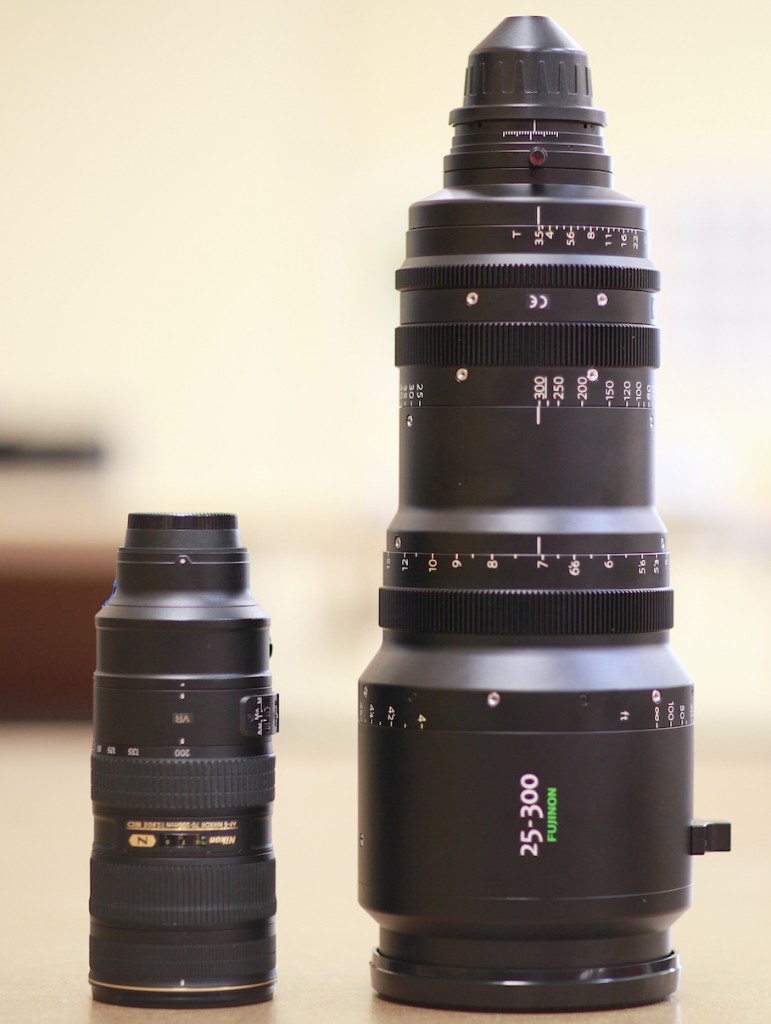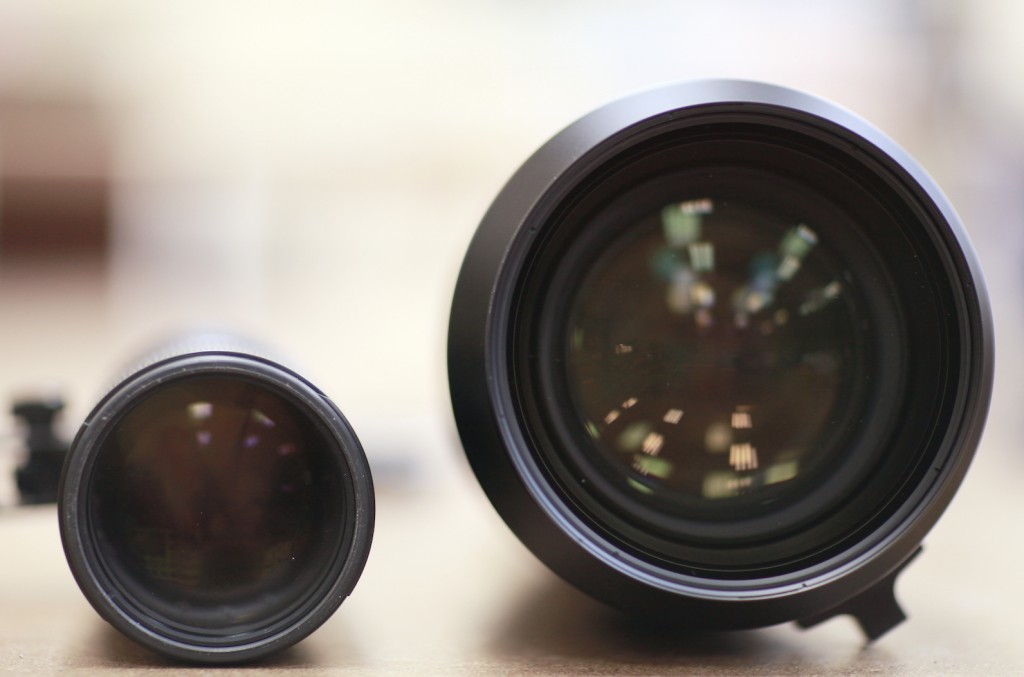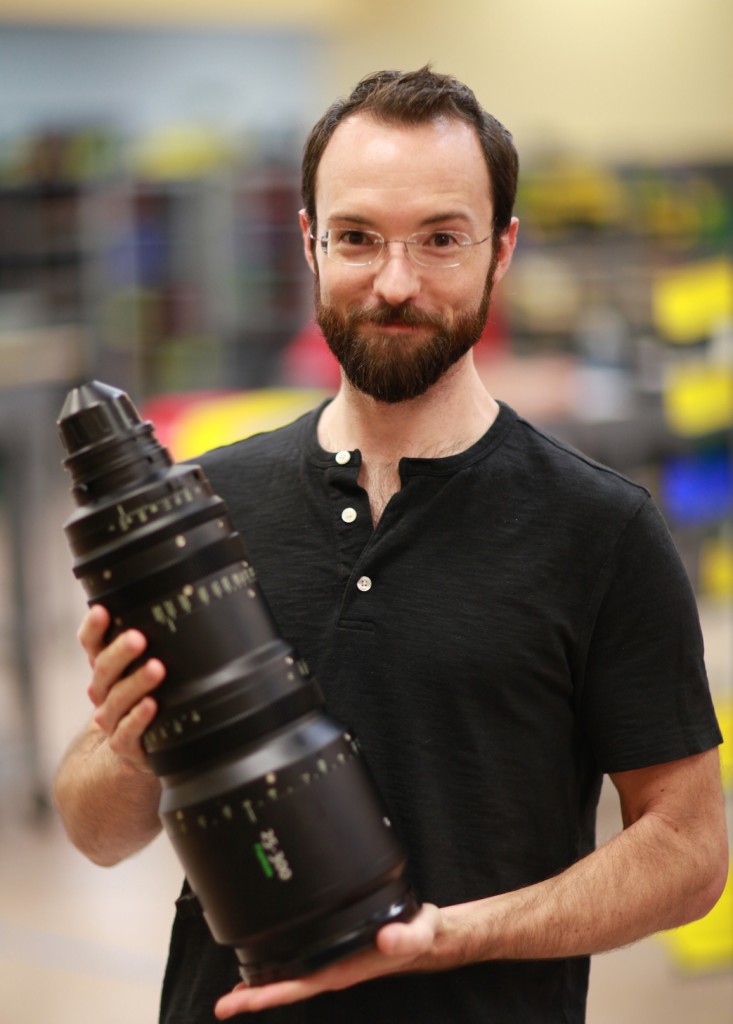Humor and Sarcasm
About That 25-300mm f/2.8 You Wanted
I get an email or text about once a month asking me if I think Canon, Nikon, or some other photo manufacturer will ever make something like a 24-300mm f/2.8 zoom lens. I’m usually gentle with those people, because I realize that a lot of people truly believe that if they want something badly enough, someone could make it for them. Occasionally, someone exhibits the Dunning-Kruger Effect and tells me that they know it’s a plot on the part of the manufacturers to make us buy multiple lenses instead of just one that could do everything.
I had another one of those emails a few days ago, so I thought it might be interesting to show everyone what a 25-300mm f/2.8 would (approximately) look like. We don’t actually have a photo lens of that specification, but our video friends do: The Fujinon 25-300mm T3.5. (For those who don’t know, f is a calculated value, T is actual light transmission. Most f/2.8 lenses are T3.5 to T3.8.)
The Fujinon is a PL mount lens, so I’m afraid you won’t be able to adapt it to your 5DIII or D810. If you really want to, though, you could buy a PL modified Canon 7D camera and use this as your walk-around lens.
About How Big is that?
The lens is in a video housing, so that makes it a bit larger than an SLR designed lens of the same specifications would be. But it’s 16 inches long, which wouldn’t change much if it were an SLR lens. That’s more than twice as long as a Canon or Nikon 70-200 f/2.8. It’s just about an inch longer than a Nikon or Canon 500mm f/4 lens.

- The Fujinon 35-300mm next to a Nikon 70-200 f/2.8 VR II
Those of you who shoot with filters might be unhappy with the 135mm front element, and that wouldn’t be any different if it was a photo, rather than video lens.

- Front element of the Fuji (right) and a Nikon 70-200 f/2.8 VR II (left)
It weighs in at 18.5 pounds. To compare with something most people have handled, the Nikon and Canon 70-200 f/2.8 lenses weigh in at about 3.5 pounds. Even the Canon 600mm f/4 IS weighs only 8.7 pounds. The Nikon 600 f/4 VR is closer, at 11.5 pounds.

Granted, some of the Fujinon’s weight comes from it’s video housing, zoom, and focus mechanism. From comparing video and photo versions of nearly identical lenses (from Canon and Zeiss) we could figure the Fujinon in SLR dress would weight 2 or 3 pounds less, so we’ll be charitable and say that it could probably come in no heavier than a Nikon 600 f/4.
So, for those of you who are still lusting after a 25-300 f/2.8 lens, it is available for purchase. It will run you about $44,000, but hey, you’ll save on all those other lenses it will replace.
Roger Cicala, Aaron Closz and Darryl Bolin
Lensrentals.com
October, 2014
Author: Roger Cicala
I’m Roger and I am the founder of Lensrentals.com. Hailed as one of the optic nerds here, I enjoy shooting collimated light through 30X microscope objectives in my spare time. When I do take real pictures I like using something different: a Medium format, or Pentax K1, or a Sony RX1R.
-
Steve
-
Mike
-
Branko Collin
-
Speed
-
Samuel H
-
Wally
-
Lasse Beyer
-
Chris B
-
brandon
-
A
-
Aaron Bradley
-
Chris B
-
Kevin Conelly
-
Nqina Dlamini
-
A
-
mrc4nl
-
Kevin Purcell
-
Kevin Purcell
-
Ben
-
Oskar Ojala
-
Ian
-
Joe Gunawan
-
Joel B.
-
Lee Saxon
-
KyleSTL
-
Joachim / CH
